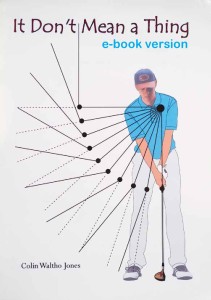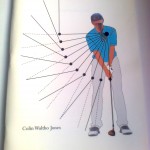This is a letter about hole-ing out from 3 foot.
15th June 2012
Dear John,
Thanks for the phone calls. I am very appreciative.
As we have noticed in the past it is important that you write to me so that you can “clear the decks”, as it were. If my reply does its job then it should finish off the job of having you “clear” for the next time you stand on a tee.
This process is part of the overall process of preventing you getting your performance out of perspective and then being tempted to chase solutions to non-existent problems. You will recognise that behaviour from your past and from your friends; it is as highly destructive as it is completely understandable.
I am pleased that you are pleased with your performance from tee to green. I think it is a very important step that you have finally come to admit to yourself that you can “play golf” with the best of them. I am also extremely pleased that you identified for yourself that you lack “history” as a golfer and that it makes a difference. My first hand experience of my father coming to tournament bowls late in life made me realise that there is a learning curve around competing as an individual that has nothing to do with the actual activity of playing.
So, all in all, 19th after 3 rounds on a foreign course in difficult conditions is a tremendous result. You will find competing in the next tournament a much more comfortable experience no matter how you perform.
Let’s talk about the putting then. My advice is to read over my stuff about putting and ask yourself if you can honestly say that you rigourously followed the method on all those short putts that have left you so frustrated. The point behind this is so that you end up taking responsibility for the performance rather than simply blaming your poor long-suffering putter.
Those putts from 3’ and 4’ are the most difficult shots you face on a golf course because the target is relatively the smallest you have to hit, and the penalty for missing is relatively the biggest. However, in your favour is the fact that the number of possible solutions – line and speed combination – is much reduced by the close proximity of the hole. Therefore, it is more likely that you are going to be able to find one of the solutions with your strike. What will stop you finding a solution is the absence of perfect “timing”, and what will cause your “timing” to go missing is muscle tightness brought on by the pressure to hole out. That’s why strict adherence to the method is critical because it maximises your chances of locating your “timing” by using the pressure of the situation to make your conscious mind give better visualisation information to your subconscious.
This is what you need to take from the tournament. You need to “get” that pressure is a good thing as long as it is servicing the method. Remember that putt you had on the 17th at RPGC, when you willed the other guy to hole his because you knew you could flatten him by then holing yours. Once you “get” that pressure is good because you know how to consciously use it to rev up your sub-conscious it will give you such an enormous advantage.
I shall state this once again: there is nothing wrong with your putting. I think that what happens is that when you feel pressure on the green it causes you to revert to old-think and as a result your “timing” goes just awry enough for you to not quite hole out. To pot three-footers you need to be at your absolutely most relaxed and most intensely zoned.
Also, given the quality of your play tee to green, you must have been “timing” superbly; and therefore, the rhythm would have been at your fingertips on the green. For it to become suddenly elusive over the three-footers and then re-appear again once you reached the next tee suggests that you were “getting in your own way” big time.
Regards,
Colin


